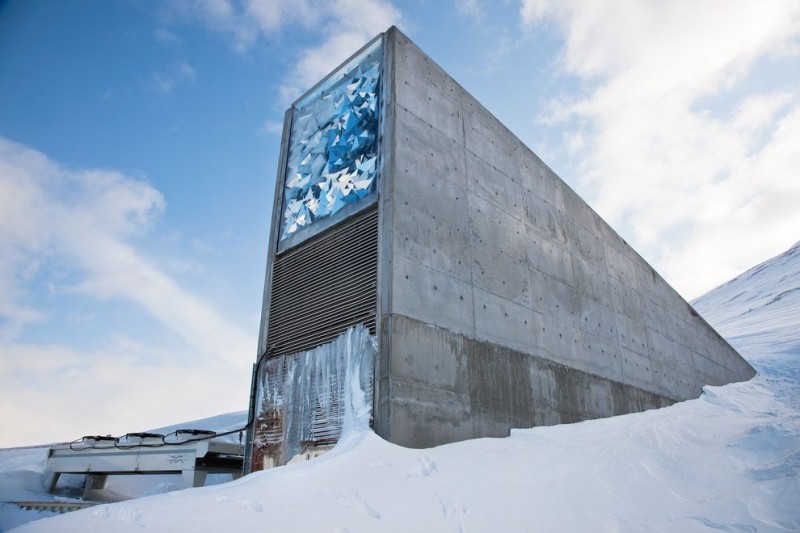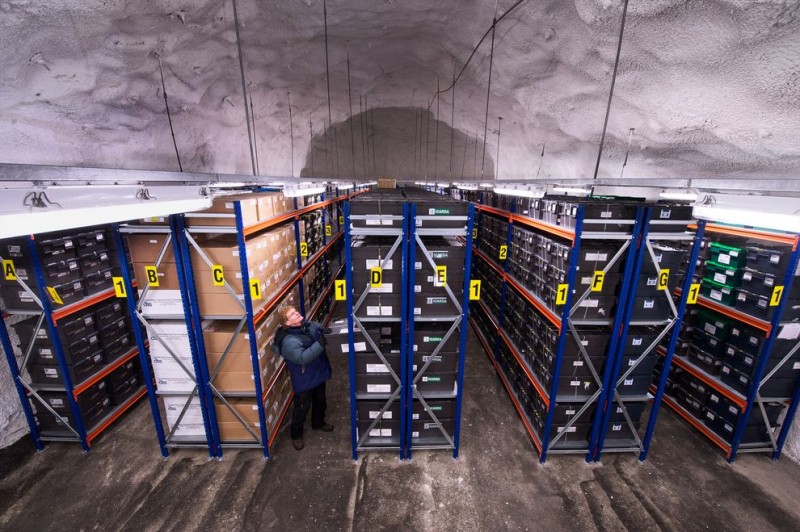Beer and whiskey lovers, raise a glass to the Svalbard Global Seed Vault, which has just taken in 20,000 new crop varieties—including 575 types of barley. The seeds, sourced from more than a hundred countries, arrived this week to coincide with the vault’s sixth birthday.
The Svalbard Global Seed Vault is a secure seedbank on the Norwegian island of Spitsbergen near Longyearbyen in the remote Arctic Svalbard archipelago, about 1,300 kilometres (810 mi) from the North Pole.

The seedbank is 120 metres inside a sandstone mountain on Spitsbergen Island, and employs robust security systems. Seeds are packaged in special four-ply packets and heat sealed to exclude moisture. Spitsbergen was considered ideal because it lacked tectonic activity and had permafrost, which aids preservation. Its being 130 metres above sea level will keep the site dry even if the ice caps melt. Locally mined coal provides power for refrigeration units that further cool the seeds to the internationally recommended standard of −18 °C. If the equipment fails, at least several weeks will elapse before the facility rises to the surrounding sandstone bedrock’s temperature of −3 °C. It’s also located in a politically stable and remote part of the world, which means that there are fewer hazards posed by messy humanity. And under international treaty, military activity is forbidden there.
As a “safety deposit box” to protect the diversity of the world’s food genes, the advanced facility houses 820,619 crop varieties. The goal of the vault is to safely preserve as many different varieties of crop species as possible before they disappear during large-scale regional or global crises. It will be also be frequently accessed when other genebanks lose samples due to mismanagement, accident, equipment failures, funding cuts, and natural disasters. These events occur with some regularity. War and civil strife have have a history of destroying some genebanks. Some 1,400 “crop diversity collections” exist globally, many in politically unstable or environmentally threatened nations.
As we’ve come to rely on just a handful of the highest yielding varieties of fruits, vegetables, and grains, thousands of other varieties are disappearing at an alarming rate. Given an uncertain future, with climate change and diseases that could wipe out a variety overnight, scientists say it’s important to keep as many different crop varieties as we can.
A feasibility study prior to construction determined that the vault could, for hundreds of years, preserve most major food crops’ seeds. Some, including those of important grains, could survive far longer—possibly thousands of years.
Here are a few highlights of the recent acquisition.

In the first ever seed deposit from Japan, the Barley Germplasm Center, located at Okayama University, sent in 575 types of barley, with plans to send another 5,000 in the future. Barley experts in the country became concerned about the stability of their gene banks following the 2011 Japanese earthquake and tsunami.
That’s because the grain is a staple of traditional Japanese cuisine. Barley is fermented to make beer, forms the base of miso soup, is roasted to make a cold tea called mugicha, and is distilled to make a Scotch-like whiskey. In 2010, Japanese brewer Sapporo made a limited-edition “space beer” with barley grown from seeds that spent five months in Russia’s Zvezda Service Module on the International Space Station.
Several of the nearly 200 species of wild potato growing from Patagonia all the way north to Colorado could go extinct by 2050 thanks to loss of habitat and climate change. That possibility has spurred the International Potato Center to action. The center shipped 195 samples of wild potato and 61 of wild sweet potato to Svalbard, in part to protect the species and to experiment with creating more nutritious, disease-resistant types of domestic potatoes.
Other “crown jewels of agriculture” are also new to the vault: The International Maize and Wheat Improvement Center mailed in 1,946 types of maize and 5,964 samples of wheat. Svalbard’s collection contains wheat seeds from individual villages throughout the world, which have baked their own unique breads through the centuries.
Brazilians eat black beans with almost every meal, and they’re an important ingredient in feijoada, a bean-and-pork stew that’s largely considered the South American country’s national dish. To protect these bean varieties for the future, the Brazilian Agricultural Research Corporation sent 514 samples to Svalbard.
